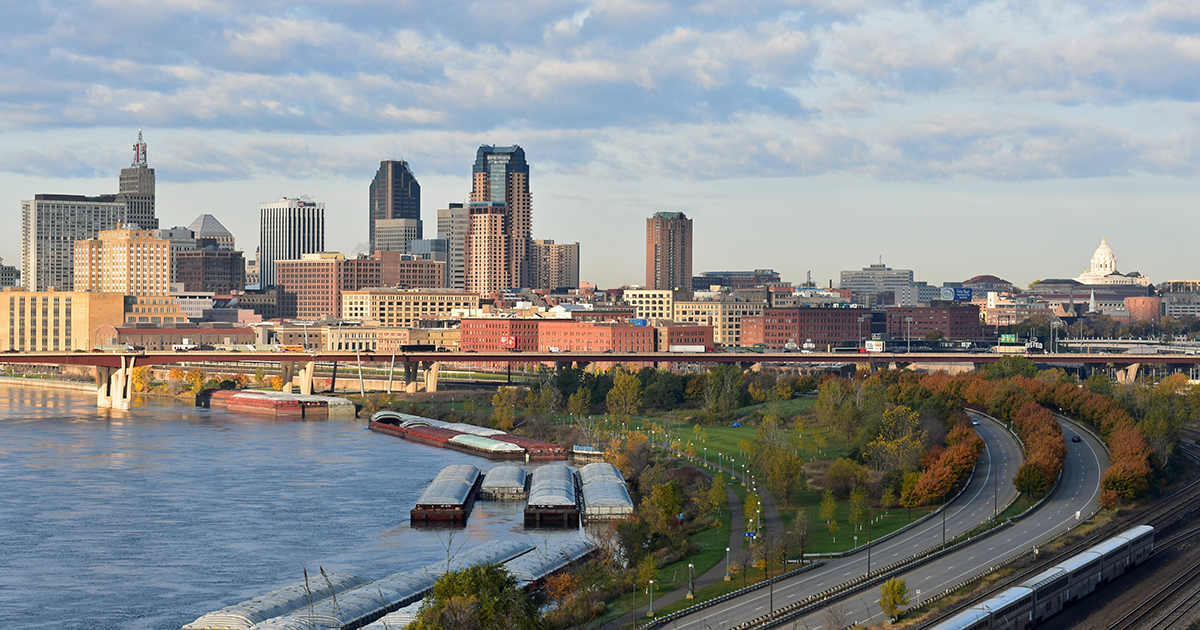From Ramsey to Ravenna, updated riverfront protections come to life
St. Paul, Hastings and other cities will soon be updating their local river corridor rules, which means city planners and community members have an opportunity to further strengthen protections along the Mississippi. Join FMR's River Guardians so you know when to weigh in.
The Mississippi River through the Twin Cities is both a national park and the state Mississippi River Corridor Critical Area (MRCCA). For decades, 25 cities and townships within the 72-mile-long critical area managed riverfront land use and development through an inconsistent patchwork of ordinances.
In 2007 FMR began working with stakeholders to provide stronger environmental protections and more clarity for property owners throughout the corridor.
After many years of work, we’re now in the final step in river rules modernization: Cities and townships are adopting updated state rules for the riverfront into enforceable ordinances that guide vegetation and stormwater management, blufftop development, building heights and setbacks, open space protection and more for 54,000 acres of Twin Cities riverfront.
Progress so far
Seven communities’ MRCCA ordinances are complete or close to complete: Minneapolis, Champlin, Maplewood, Mendota Heights, Newport, Ramsey and Ravenna. Cottage Grove and St. Paul Park are also finishing up the public input process for their ordinances.
Sixteen more communities, including St. Paul, will follow in the next two years. (Here's the full list of cities working on their ordinances.)
FMR's goal throughout the MRCCA ordinance adoption process is to be a constructive, helpful partner to cities and their residents. Many communities have welcomed FMR’s assistance with ordinance development. We’re giving presentations, informing residents, recommending ordinance language and sharing ideas between cities.
Regional protections, local flexibility
FMR also engaged over 120 River Guardians and community partners in advocating for Minneapolis to add bird-safe building and lighting requirements to its ordinance — and we succeeded! Minneapolis is leading the way in protecting the river flyway’s migrating birds. We hope to see other cities, particularly St. Paul, follow suit.
The state's rules provide this kind of flexibility to cities and townships. Every community's ordinance must meet a strong baseline standard established by the Minnesota Department of Natural Resources, but communities have the option to add other protections based on what's special about their part of the river.
For instance, Mendota Heights is concerned about the fragile, erosion-prone bluffs that characterize its riverfront. They added special protections to their ordinance for the underground springs that flow from these bluffs, requiring that potential harm to these springs be assessed and prevented in some development projects.
Other local adaptations to ordinances have included requirements to use native vegetation in certain large vegetation replacement projects, provisions to reduce light pollution and options for cities to protect more open space in new subdivisions.
No two MRCCA ordinances are quite identical, but their end result will be stronger and more consistent management standards. These modern, science-based ordinances are not only good for the river; the baseline standard will give more clarity and predictability for communities, property owners and developers.
Get involved
Explore our videos, interactive maps and other resources that explain the process from A to Z. Then get involved in your city's ordinance.
Questions? Contact FMR Land Use & Planning Program Director Colleen O'Connor Toberman, ctoberman@fmr.org, 651.222.2193 x29.
